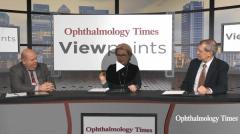
Glaucoma Medications and Dry Eye Disease
Episodes in this series

Eye care experts highlight the impact of glaucoma medications on dry eye disease and strategies for management.
[Transcript]
Marguerite McDonald, MD, FACS: The dry eye patient who’s on a glaucoma medication, Rich, you touched on it before. There are quite a few peer-reviewed publications indicating that that leads to noncompliance and loss of visual field, etcetera, because of the terrible discomfort of putting a glaucoma drop on a dry eye.
Richard Mangan, OD, FAAO: Yes, and I see that unfortunately a lot as well. And I hear arguments on both ends, that lowered cost should lead to greater compliance. At the same time, if it’s a product that’s not beneficial to the ocular surface, they oftentimes won’t use it and sometimes stop more than just 1 offending agent. They’re not sure which 1 it is.
Marguerite McDonald, MD, FACS: Stop them all.
Richard Mangan, OD, FAAO: They’re less compliant with all of them, and again, that’s where patient education is very important about if there’s any concern about how a drop is feeling on the eye, that they need to let us know.
Marguerite McDonald, MD, FACS: Does that lead you more toward non-preserved unit dose BAK [benzalkonium chloride]-free medicines?
Eric Donnenfeld, MD, FACS: Of course you want to minimize the number of drops the patient receives, so a once-a-day glaucoma drop is better than a twice-a-day glaucoma drop, which is of course better than a three-times-a-day glaucoma drop. Limit the BAK. For patients who have significant dry eye problems, you can start them on non-preserved drops. But very commonly when I have a patient who has dry eye to start with and we’re starting glaucoma therapy, I think it’s really a good idea to manage their dry eye at the same time that you manage their glaucoma. Putting patients on immunosuppressive therapies concomitantly with glaucoma management I think does a great job in assuring patient satisfaction and making sure the medications stay where you want them to go. The use of lifitegrast or cyclosporine I think are really important for our glaucoma colleagues to use to make certain our patients get the right outcome.
Newsletter
Don’t miss out—get Ophthalmology Times updates on the latest clinical advancements and expert interviews, straight to your inbox.



























































.png)


